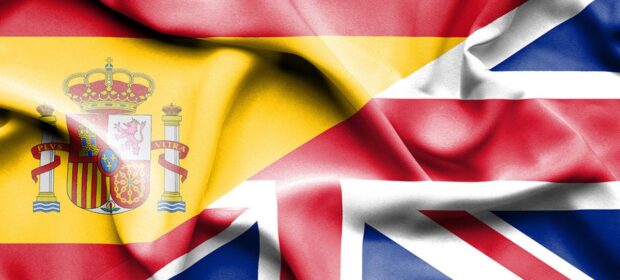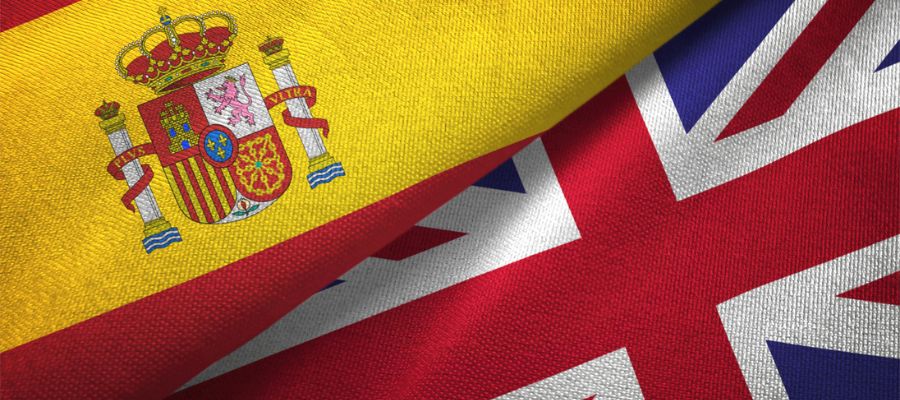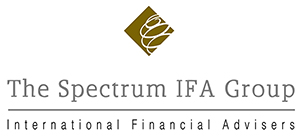Non-habitual residency (NHR) is a 10-year preferential tax status granted to new residents of Portugal and it has been a major draw to the country for many years.
NHR: A closed door but an open window
By Portugal team
This article is published on: 22nd November 2023

The announcement at the beginning of October regarding the proposal for the end of NHR in 2024 was unexpected and has caused quite a stir amongst those who had longer-term plans to move to Portugal, as well as for those who may be concerned about the attraction of Portugal going forward.
The new rules have not yet been finalised and much can change before the 29th November, but what do we know right now?
The end of NHR?
At the time of writing, the proposal is that NHR will be abolished on 31st December 2023. However, the government has most recently announced a ´transitory NHR regime´ to ease in the new rules throughout 2024. This will guarantee the right of certain individuals to apply for NHR, but interestingly it also leaves the possibility open for the next government (elections to be held early March 2024) to either continue with the abolition, alter the current NHR rules, or maintain NHR in its current state.
Whilst the future of NHR is still very much uncertain, the transition rules mean that instead of a hard end to NHR at the end of 2023, qualifying individuals can still apply for NHR during 2024. This grandfathering in ensures that those who have been strategically planning their move and making life changes will not be left disadvantaged by a sudden withdrawal of the scheme.
Qualifying individuals are those with:
- A promise of employment or secondment, or a work contract before 31st December 2023 and where the work is performed in Portugal.
- A contract in respect of purchase, lease or use of property in Portugal concluded before 10th October 2023.
- A reservation or promissory contract over a property in Portugal before 10th October 2023 i.e. a `contrato-promessa de aquisição de direito real sobre imóvel`.
- Enrolment or registration of dependants in education within Portugal before 10th October 2023.
- A residence permit or visa obtained prior to 31st December 2023.
- A residence or visa process registered with the relevant authority before 31st December 2023.
Recent and new residents
It is expected that there will a high volume of applications, so if you are a recent resident and have not yet applied, if you receive your residency status before 31st December 2023, or qualify in some other way as detailed above, apply as soon as you can.

Missed the boat?
More careful planning will be needed for those who move after the deadline has passed or do not meet the qualifying criteria.
As always, planning should ideally start in your originating country so you can make a ‘road map’ to take advantage of any windows of opportunity and tax reliefs in both countries. But the need for effective planning will be even more important with the uncertainty and potential end of NHR as new residents will immediately be subject to the standard rates of tax and will not have the grace period of the NHR period to soften the tax blow if restructuring is required.
Some important considerations for individuals in this position still contemplating the move are:
- If still working, there will be no 20% ‘high value’ activity option and earned income will be taxed at scale rates of 14.8% to 48% (plus the potential for solidarity tax at 2.5%/5%). If you can choose how you are remunerated, it may be more beneficial to opt for dividends which are taxed at 28% and do not attract a social security liability.
- For retirees, a change to the low 10% tax on pensions could affect how or when you decide to access your pensions. Standard residents are generally taxed at scale rates, but the ultimate tax basis does depend on the type of pension.
- Those with large investments should look to restructure as interest, dividends and capital gains (on an arising basis i.e. sale/switch of funds, even if not withdrawn), are all taxed at 28%. There are tax-efficient structures available to Portuguese residents that offer a shelter from tax in the accumulation stage and provide more beneficial rates of tax on drawdown.
Current NHRs
One positive is that those with NHR can retain the advantageous tax status but even so, you should begin planning for the end of your NHR. Some important opportunities exist if you are planning to sell foreign property as the gain is tax-exempt during NHR but taxable afterwards, or if you are drawing tax-free dividends, which will be taxable at 28% post-NHR.
Planning now will allow you to time and control your tax position – this may be switching how income is generated, creating tax structures, or realising capital for the future. Leaving it too late may result in an unfavourable and irreversible outcome.
Not all doom and gloom
Regarding the end of NHR, we will just have to wait and see, but even if 2024 does spell the end of the scheme for new arrivers, Portugal can still be a very tax-effective place to live. With the right structuring, many wealthy Portuguese nationals and expats enjoy the same or even lower rates of tax than under NHR.
Financial update France
By Katriona Murray-Platon
This article is published on: 7th November 2023

November is here, the temperatures have dropped and it is cold and rainy outside. So here is some good financial news to warm you up!
Since the 1st January 2023, Taxe d’habitation no longer applies to the main residence. Now it is only those with a second home who have to pay taxe d’habitation on their second property. The tax statements should be on your online account on the impots.gouv.fr website in November. You have until 15th December to pay this tax.
In France, one out of ten houses are considered to be second homes by the tax office. These properties are mainly to be found on the coast (40%) or in the mountains (16%) with the remainder being mainly in the larger towns and cities (12%). These properties are usually smaller than the main home with a quarter of them being less than 40 m².
Contrary to what some newspapers would have you believe, any taxes on second homes largely affect French owners and not foreigners, since only one out of ten second homes are owned by a person living outside France. Among those owned by French residents, two out of three properties are owned by people over 60. This figure increases to three out of four along the coast. 34% of properties are owned by higher income households. https://www.insee.fr/fr/statistiques/5416748.
Make sure that you check your Taxe Foncière statement that you received in October as there could be a mistake on it. According to the French tax office approximately 1.87 billion euros have been overpaid just in 2023 because of mistakes made by the tax office.
The draft finance law has been making its way through parliament. Article 2 of the draft finance law for 2024 has increased the tax brackets by 4.8%. The new proposed tax brackets are as follows:
| Income | Tax rate |
|---|---|
| Up to €11,294 | 0% |
| From €11,294 to €28,797 | 11% |
| From €28,797 to €82,341 | 30% |
| From €82,341 to €177,106 | 41% |
| Over €177,106 | 45% |
If you are in receipt of a French pension through Agirc-Arrco, the additional pension (complémentaire) will increase by 4.9% in November. It increased last November by 5.12%. The French State pension will also increase by 5.2% from 1st January 2024.
If you haven’t already looked into carrying out work on your house to improve your heating or energy efficiency, now may be the time as the amount of the bonus (MaPrimeRenov) has increased on average by €4300.
The maximum amount that you can put into a LEP savings account has increased since 1st October from €7700 to €10,000. The interest rate on this amount remains at 6%. To be eligible to have a LEP, your taxable income (revenue fiscal de reference) for 2022 as stated on your tax return received in Autumn 2023 must be less than €21,393 for a single person, or €32,818 for a couple.
The 30th November is the date by which you must inform your bank if your taxable income (revenu fiscal de reference) in 2021 was less than €25,000 as a single person or €50,000 as a couple, so that they don’t automatically take the 12.8% tax from the interest on your savings in 2024. If you receive dividends, the income thresholds are higher, €50,000 for a single person and €75,000 for a couple. This is particularly important if your income is not taxable or in the 11% tax bracket. These thresholds remain the same as previous years and have not increased with inflation.
November is the month when you can see the most beautiful autumn colours around France. It is also a great time to review your finances and make plans for the year ahead. If you have any questions on the above or any other matters, please do get in touch!
UK term deposit rates as a resident of Spain
By Jeremy Ferguson
This article is published on: 1st November 2023

This is something I am being asked a lot at the moment, as so many of my clients have money on deposit in UK banks.
Many of them are offering healthy fixed term deposit rates at the moment to clients, but very often my experience is the bank will only allow customers who live in the UK to place cash into these term deposits. This only tends to come to light after speaking with them for ages on the phone to try and move your cash, after which they will very often ‘reject’ your request due to the fact you live here in Spain. Some banks are OK with that, but the majority are not.
There are also a few ‘downsides’ to these term deposits when you are a Spanish tax resident. To explain; if you were to invest in a 1 year term deposit offering 5%, then this will of course be taxed here in Spain at maturity. The complication comes with the fact that you have to file your tax returns in Euros. Imagine if you placed that one year deposit today, maturing in a year’s time in November 2025, and then assume a scenario where the exchange rate recovered from the 1.14 ‘ish’ we are seeing at the moment to 1.18 by the end of next year, (which is entirely feasible). You would have to declare the 5% yield in euros, which would end up at approximately 8.5% in this example. Tax will then be due on this amount, having the effect of significantly reducing your actual ‘profit’.
Of course it could go the other way but this is an issue, as each year the fluctuations can ‘disturb’ the actual amount you receive. This has only really come to light this year, as people have just not experienced yields on cash deposits for such a long time.
There is also of course the risk of placing your funds with the bank you chose, or institutional risk. The compensation scheme in the UK most people are familiar with will cover a deposit loss up to £85,000 per individual account. To utilize this as best you can it can get messy trying to hold money in many different banks. The reality for most people I deal with here is they tend to have a UK bank account from when they lived there. To try and open a new UK account when you live here is nigh on impossible, so spreading your risk by having a number of different accounts isn’t achievable.

However, a solution which deals with most of these issues is available. Without getting into too much detail, you can invest in a cash ‘fund’ run by one of the World’s biggest Investment Companies. Your money ends up being invested with nearly 200 underlying banks within the fund, so the risk of a bank failure is massively reduced.
Using the right structure to access this fund means you don’t have to pay tax on an annual basis as this will only be due when you cash in your investment, and therefore each year there is no need to consider the complications of the exchange rate issue touched upon earlier.
If rates were to rise further the fund will automatically take benefit from that, and so your ‘cash’ is being actively managed with no need for you to be doing anything.
The suitability of this solution of course depends on each person’s individual circumstances, but if you would like some more information, please do not hesitate to get in touch on the form below.
Educational Workshops Portugal
By Portugal team
This article is published on: 31st October 2023

Covering a wide range of topics, our workshops aim to give you the knowledge
to make good choices in all areas of financial planning, taxation
and organising yourself for life in Portugal.
November workshops: Pensions
8th and 9th November
An informal round table format, we will be discussing issues such as:
- How different types of pensions are taxed in Portugal
- Where tax should be paid on different types of pension income
- Double taxation and how to avoid it
- Drawdown options and the tax implications
- UK pension changes: LTA abolition, impact on taxation
- Tax planning opportunities: Pre-April 2024 planning window
- QROPS & QNUPS: Do you really need one or should you keep your UK pensions?
- How to pass on your pensions and the implications for your beneficiaries
- Open Q&A throughout
December workshops: Inheritance Tax (IHT), Domicile & Succession
5th and 6th December
An informal round table format, we will be discussing issues such as:
- Portuguese & UK inheritance taxes: thresholds, rules and allowances
- Succession laws: UK rules, Portugal and forced heirship, Wills and Brussels IV
- IHT mitigation strategies and planning ideas
- Gifting: thresholds, rule and avoiding IHT clawback
- QNUPS: does it really shelter UK IHT in practice,
- How to protect family wealth, your beneficiaries and bloodline planning
- How to control family wealth during your lifetime and after your demise
- Open Q&A throughout
The workshops are taking place in two wonderful locations –
The Magnolia Hotel (Almancil) & Boavista Golf & Spa (Lagos)
November workshops: Pensions
8th November 2023
Boavista Golf & Spa,
Quinta da Boavista, 8601-901 Lagos
10am – 1pm (with a coffee break)
9th November 2023
Magnolia Hotel,
Estr. Da Quinta Do Lago, 8135-106, Almancil
10am – 1pm (with a coffee break)
December workshops: Inheritance Tax (IHT), Domicile & Succession
5th December 2023
Magnolia Hotel,
Estr. Da Quinta Do Lago, 8135-106, Almancil
10am – 1pm (with a coffee break)
6th December 2023
Boavista Golf & Spa,
Quinta da Boavista, 8601-901 Lagos
10am – 1pm (with a coffee break)
Sign up for the workshops below
Le Tour de Finance visits Italy
By Gareth Horsfall
This article is published on: 30th October 2023

I am back in the office after Le Tour de Finance dates last week in Abruzzo and Marche…..and I learned something interesting from the people that came along!
It was great to be getting out of the office again and going and touring the country with our financial experts. I have to admit that the organisation of the events is a bit stressful: finding and negotiating with the venue, finding the right people to come and speak and then dealing with the logistics over the 2 days. But, in the end, it is not just good for work, but I really enjoy being able to be to be out and about, visit new parts of Italy and meet new people and speak with old, alike.
These Le Tour de Finance events were all about the ladies!
I had deliberately invited only female speakers to get another perspective on the world of finance this time and although I can’t exactly put my finger on what was different, the atmosphere was different in some way. Exactly what I can’t say, but something for sure. So, I will put that down as a success!
I did mention above that I learned something from the people that came along. There was a difference in the focus of people’s attention this time. Normally it has been primarily focussed on Italian taxation and the financial planning in Italy, but this time the majority of the questions and queries during the talk and after over lunch, were centered around the investment markets and the future outlook for investors. I guess that shouldn’t have taken me by surprise given the state of world geopolitics, but it was interesting to note and helps me to focus in these E-zines and my other articles.
However, this E.zine is not designed to provide you with a long interpretation of what was said on the day. Instead I managed to find the time to interview the speakers and here are the videos, in full.
If you also have questions about financial markets, investing and how world geopolitical events affect your money then you might find the interview with Joy Callender and Lorraine Reddaway from RBC Brewin Dolphin very interesting. We have inserted some slides into the videos which provide visual aids to what we are saying.
First interview with RBC Brewin Dolphin asset managers.
Second interview with Stefania Falcone at Currencies Direct where we have a chat about exchanging currencies and the difference between them and Wise.
And the last video with Judith Ruddock of Studio del Gaizo Picchioni where we talk about the Agenzia delle Entrate, common tax mistakes for residents of Italy and what to watch out for.
Women & finance
By Portugal team
This article is published on: 30th October 2023

It seems strange to think that gender differences can not only affect the way in which we think about managing our finances but the practical needs and requirements too. But with 60% of the UK’s wealth estimated to be in the hands of women by 2025 (a trend seen throughout most countries) being cognisant of these differences will put you – or the women in your life – a step ahead.
What are the issues?
Even today, studies show that despite 85% of women running household finances, over half of women defer to partners to manage and make long term financial decisions. There are several reasons for this, but a lack of confidence saw women shying away from taking a more active role. With 3/4 of women aged 60 either single, widowed or divorced, relying heavily on a partner can leave them disadvantaged.
Women live longer than men and their finances must therefore last longer. Recent ONS statistics predicted a lifespan of 83.1 years for women, and where planning has not been put in place, or put in place with a male’s longevity in mind, women may find themselves struggling in later years.
Women are naturally more cautious and conservative, but over the long term, such investments have lower growth potnential. A YouGov study showed that 55% of women had never held an investment vs. 35% of men.
80% of companies are paying women less than men. A 2021 study by NEST showed that the average working woman could have a pay gap of £70,000 at retirement. Similarly, women are more likely to have taken time out of employment or reduce hours to care of children and/or elderly parents and relatives. These career breaks not only directly affect income, but can affect promotion or progression opportunities. This has a knock on effect on finances and women are seen to have approx. 51% less in retirement savings than their male counter parts.
These factors mean that women must take a different approach to men when thinking about their finances. This is something investment providers are recognising. For example BlackRock, the world’s largest fund manger, has recently launched investment funds geared at women and aimed at addressing and incorporating the issues women face.

What can you do?
Develop your understanding and relationship with money. Ask yourself why you have certain feelings or views around money. What makes you uncomfortable? When do you feel this? Why? Identifying your strengths and weaknesses will help you on your financial journey.
Make time to set goals and develop your financial plan. Your plan should be specific and realistic otherwise you are setting yourself up for failure.
If you are still working, know your worth. Women negotiate less than men when it comes to pay – 33% of women vs. 43% of men. Do your research, demonstrate your value and remember, if you don’t ask you won’t get!
Invest your money. Saving money is one thing, but how do you build wealth for the long term? The single most detrimental impact on savings is inflation. As things get more expensive, your income and savings must also grow to keep up, and cash or bank deposits are not a good inflation hedge. Whilst investing does carry risk, it provides the best opportunity for inflation beating returns in the long run – an opportunity for women to use their longevity in their favour!
Don’t be afraid of investing and use professionals to help you get it right. Statistics show that women make better investors, often achieving better returns than men. A study by Hargreaves Lansdown showed women’s returns outperforming men by 0.81% over 3 years (over 30 years this would result in a portfolio value of 25% more).
If you are already investing ensure that you review things regularly and pay close attention to your investments. It is not uncommon to see portfolios that have not moved in many years due to high fees or poor performance.
Take control and build your financial confidence. This maybe through education or working with professionals, but it will allow you to identify and take advantage of opportunities, achieve financial independence and peace of mind.
Tax changes in Italy
By Gareth Horsfall
This article is published on: 29th October 2023

I am rushing this E-zine out to you after travelling for the last 2 weeks, because there are some important developments in La Legge di Bilancio 2024 which may affect you.
Not since 2014 and the new tax laws introduced by Mario Monti have I seen such big changes in the tax system in Italy. Georgia Meloni’s government have clearly taken a leaf from that book and have introduced a raft of new tax law changes which have recently been announced in La Legge di Bilancio 2024. (These have not been passed yet, but it is highly likely that they will be voted on before year end!).
THE MOST IMPORTANT OF WHICH, FOR MY CLIENTS, IS AN INCREASE ON THE WEALTH TAX ON OVERSEAS PROPERTY!!!
Below I explain a few of the changes and which groups of people they might affect.
“Those who plan do better than those who do not plan, even should they rarely stick to their plan!”

1. Wealth tax on overseas property will increase from 0.76% to 1.06%.pa
On an average overseas property taxable value of GBP300,000 or USD300,000, the tax will rise by 900 a year!
2. Affitti Brevi – cedolare secca – tax to increase from 21% to 26%
If you rent out a property in Italy for short terms rentals (less than 30 days), and you are not registered as a company, then you have the option of applying the ‘cedolare secca’, which is a sort of preferential forfeit rate of tax (expenses non deductible) of 21%. This will rise to 26% from January 2024.
3. Proposed Tax Band changes for 2024
| 2023 | |
|---|---|
| €0 - €15,000 | 23% |
| €15,000 - €50,000 | 27% |
| €50,000 + | 43% |
| 2024 | |
| €0 - €28,000 | 23% |
| €28,000 - €50,000 | 35% |
| €50,000 + | 43% |
4. Non-EU citizens resident in Italy! will have to pay an annual contribution of €2000 to access the Italian health service.
(The contribution will not have to be paid for foreign students with a permesso di soggiorno or similar)
This is a huge development, because any non-EU citizen resident in Italy (US persons and now Brit’s) who is currently paying for access to the Italian health service is assessed based on a certain level of ‘reddito complessivo’ (total income).
You can access that info from the Minstero della Salute website on the link below:
https://www.salute.gov.it/imgs/C_17_pagineAree_2522_listaFile_itemName_0_file.pdf
If you are a non-EU citizen living in Italy, and maybe paying the minimum of €387,34 a year, then this could be a significant rise of nearly €1600 a year!
(Interestingly if you have a high income level and are assessed on the maximum under the current criteria, then €2000 a year would be a quite sizeable discount – assuming the reddito complessivo calculation is no longer valid).
Here are the categories of people who would need to pay.
1. Students or equivalent who are in Italy for a period of less than 3 months.
2. Holders of the permesso di soggiorno for ‘residenza elettiva‘ !!! who don’t have any form of work.
3. Persons of religious institutions.
4. Diplomatic and consular personnel of foreign representations in Italy. (excluding staff with an Italian work contract)
5. Employees of International organisations operating in Italy. (presumably United Nations et al)
6. Foreigners who work for International organisations operating in Italy. (not on Italian contracts)
7. Foreigners who participate in voluntary programmes
8. Parents, over 65 years old, who have or will move to Italy to be with family members, after 5th November 2008.
9. All other excluded categories.
*** Notable is the category of anyone applying for ‘residenza elettiva’. This will affect alot of UK and US citizens who may currently be applying to become resident in Italy under the residenza elettiva category.***

*****Interesting exclusion from the list. *****
One notable category of people missing from the list is Brit’s who were registered in Italy before Brexit and therefore have acquired EU rights as per the EU/UK withdrawal agreement, also retired Brit’s with the right to reciprocal healthcare in Italy under the S1 arrangement. It remains to be seen whether they would be expected to pay or not. (I would think not!) My suspicion is that no one has even thought about this category of individuals and so, like many pieces of Italian legislation, it is first introduced then clarified over time. My thinking is that this one will have to be taken up by the British Embassy and the remaining UK citizen rights lobby groups, for clarification.

And lastly……………………..
Changes to the meaning of residence and domicile!!
(very important for anyone who has residenza in Italy but is claiming ‘fiscal’ residency in another country)
The new text relating to the definition of residency and domicile is as follows:
“Il comma 2 dell’articolo 2 del Testo Unico delle Imposte sui redditi, approvato con decreto del Presidente della Repubblica del 22 dicembre 1986, n. 917 è sostituito dal seguente: “2. Ai fini delle imposte sui redditi si considerano residenti le persone che per la maggior parte del periodo d’imposta, considerando anche le frazioni di giorno, hanno il domicilio o la residenza nel territorio dello Stato ovvero che sono ivi presenti. Ai fini dell’applicazione della presente disposizione, per domicilio si intende il luogo in cui si sviluppano, in via principale, le relazioni personali e familiari della persona. Salvo prova contraria, si presumono altresì residenti le persone iscritte per la maggior parte del periodo di imposta nelle anagrafi della popolazione residente.”
Let’s anlayse the important differences below:
1. Change in the definition of domicile:
In Italian law it currently reads as:
“the place of your principal place of work or interests”
The new definition will be connected to your personal status and read as follows:
“the place where the person’s personal and family relationships mainly develop”
This could be significant for anyone who previously may have claimed working abroad as a criteria for not being resident, whilst their main family relationships were still in Italy.
2. Fractions of days.
If you are someone who has to count your days in and out of the country to maintain non-residency or residency alike, then you will likely need to count fractional days in Italy as well. i.e any time spent in the country in any one day will be counted as a full day for residency purposes.
3. Assumed residenza for anyone registered at the anagrafe for the majority of the fiscal period (calendar year)
Again, this is an important development for anyone who is registered as resident at the anagrafe, has a carta d’identità and certificati di residenza, but is claiming fiscal residency in another tax jurisdiction.
It is clear from these changes that the Italian government is tightening up the rules around residenza and closing those loopholes which many people have used to get around ‘residenza fiscale’ whilst retaining the benefits of being registered as a resident in the anagrafe,
I have been banging on that drum for a long time now. If you are registered as a resident in Italy for the majority of the calendar year then by definition you are also considered fiscally resident as well. Whilst the definitions allowed for people to get around the law, it seems that this will become much harder.
How all this will be put into action is anyone’s guess, but it might be prudent to think that once the laws are refined, then the authorities can use existing information to further investigate matters that have already come to their attention but they have been unable to act on due to the loopholes in the system.
Therefore, the advice is simple:
If you think that anything above might affect you then do some financial planning before it is too late!
Are bonds back?
By Portugal team
This article is published on: 27th October 2023

Recent times have been tough for bond prices due to rising interest rates and inflation concerns, but there are signs that the bond market could now offer some interesting opportunities for investors.
The bond market is much larger than the stock market with figures from Morningstar valuing the market at approx. $300 trillion compared with the stock market at approx. $124 trillion, so it is a significant market for investors to understand.
What are bonds?
A bond is simply a loan that an investor makes to a government or company in return for a set interest rate, known as a coupon. For example, if you buy a 10-year 5% US Treasury bond for $100, you are lending $100 to the US government who will pay you $5 each year for 10 years and at the end of the term, you get your original capital of $100 back.
Investors like the predictable income and the relative stability of bond investments. They also complement shares which tend to be more volatile e.g. when share prices fall and investors are nervous, they often flock to the relative safety of bonds, which pushes up the value of bonds to compensate.
There are many bonds to choose from, each with different levels of risk, and therefore return expectations. For example, instead of buying a US treasury bond, you could buy a bond in Apple or BP and because there is more risk in lending to a company than there in lending to the US government, you can expect a higher coupon of say 6% or 7% to compensate for this increased risk.
Recent market issues – an exceptional period
In simple terms, traditionally, the prices of bonds move in an opposite direction to interest rates so when interest rates rise, bond prices fall.
Given that interest rates globally have been steadily increasing for the last couple of years, bond prices have naturally suffered.
One unusual phenomenon we have seen is that stock markets have also performed relatively poorly so we have seen bonds and stocks falling at the same time. This is a very rare event which has only happened three times in the last 45 years and many commentators believe the normal diversification and inverse relationship between bonds and shares will resume going forward.
Last week, we saw that UK 30-year bond yields rose to their highest level since 1998 and similarly, US Treasury yields are at a 16-year high, despite high interest rates. So why is this?
From a UK perspective, the recent mini-budget included tax cuts and increased spending, something that will need to be paid for through increased borrowing. The government does this by selling more bonds. But more government debt without the economic growth to support it spells increased risk for the economy and it is this that triggered a large-scale sell-off of UK bonds, reducing the price and therefore increasing yields.

Looking forward
There are three supporting factors for a positive outlook for bonds:
1. As bond prices have fallen, the yield available to investors has increased substantially which supports bonds and the outlook for prices going forward. As a result, bonds may provide an attractive level of income, and at relatively low risk levels, which has not been seen for many years.
2. Figures from Vanguard, the world’s second-largest fund manager, show that bonds typically outperform cash in the three years following peak rate hikes dating back to 1980. The Federal Reserve, Bank of England and European Central Bank have all signalled interest rates are close to or have peaked already. The consensus is therefore that interest rates and yields should fall over time, and as prices move opposite to interest rates, bond prices should rise.
3. Bonds have historically performed better than shares and cash during recessions. With concerns still lingering about economies entering recessions, bonds could again offer value in a portfolio.
Of course, we always have to point out that history does not always repeat itself and things may happen differently this time, but the alignment of several tailwinds for bonds is a positive signal.
When a bond is not a bond
Please note that there are also tax structures known as “investment bonds” which are not to be confused with the bonds we’ve discussed in this article. Investment bonds are a form of tax wrapper and they are often used by residents of Portugal (as well as being efficient from a UK tax perspective) to hold and manage investment portfolios.
Spectrum supporting Mimosa Matters
By Peter Brooke
This article is published on: 25th October 2023

The Nice to Cannes Relay Marathon
As we gear up for the upcoming Nice to Cannes Relay Marathon on November 5th, I wanted to take a moment to share with you the reason behind my choice to support Mimosa Matters, a charity that holds a special place in my heart.
In a world that often seems to move too quickly, community stands out as a pillar of strength and support. It’s a reminder that we are not alone and that, together, we can make a meaningful impact. The Nice to Cannes Relay Marathon embodies the spirit of community, with individuals coming together to achieve a common goal through teamwork and perseverance, and having a bit of fun together through the aches and pains.
Don’t worry, I am not running the entire Marathon – that would be crazy – I will leave that for those whose fitness levels are way better than mine!
I am running the final 6.4km leg…. some might say the ‘taking-all-the-glory-leg’… for Team Early Birds, a gang of super women who are doing all the hard work over the proceeding 35.6km; if you have a spare euro or two, please do consider empowering our legs to carry us all to the end by helping us raise some funds for the important work that Mimosa undertake.
The fundraising link for our team is here
I was hoping to run a longer leg but a recent bout of bronchitis and a lower back injury have curtailed my training a little but I am back hitting the tarmac again and as I lace up my running shoes for my leg of the Relay Marathon, I am not just running for personal achievement; I am running to try and make a difference.
Mimosa Matters shares this commitment, and by supporting their cause, we can collectively contribute to creating a stronger, more compassionate community.
Your contribution, no matter the size, will help make a positive impact on the lives of those in need. Together, we can run towards a brighter and more connected future. Of course, please don’t feel any pressure to contribute at all… instead perhaps share this email or come and encourage us all on the road a week on Sunday, you won’t miss us, we’ll all be in bright yellow.
Why Mimosa Matters
Spectrum and I have chosen to support Mimosa Matters again because of the incredible work they do in fostering a sense of community and making a positive difference in the lives of others. Mimosa Matters goes beyond traditional charity by actively engaging with local communities and addressing their specific needs in the fight against cancer.
They work closely with local cancer professionals & associations to create and fund projects to increase awareness of the causes of cancer and to channel funds into cancer research and into associations that directly support patients and their families living with cancer in our region.
Sadly, too many of us have been directly affected by this relentless disease and we must stand, walk or run together to try and stop it.
Please follow these links if you would like more information about Mimosa Matters
https://www.mimosamatters.org/
and the Marathon https://www.mimosamatters.org/project/nice-cannes-marathon-2023/
And, in case you missed it, the all important fundraising link again for our team is here
https://www.helloasso.com/associations/mimosa/collectes/team-early-birds-running-for-mimosa
https://www.facebook.com/mimosamatters and https://www.facebook.com/financial.advisors
Thanks for taking your valuable time to read through this, I really appreciate it.

Financial seminars on the Algarve
By Portugal team
This article is published on: 17th October 2023

Even with diligent preparation and thorough planning comes a mild sense of apprehension as the big moment approaches.
How many guests will show up?

It was then with quiet satisfaction, and some relief, that Spectrum’s Debrah Broadfield and Mark Quinn welcomed a steady stream arrivals to their financial planning seminars in the Algarve this week.
At two venues over two consecutive days, 80 guests attended these events for a timely update on recent changes to the investment and tax planning opportunities (currently still) available to expatriates living in Portugal.
With explanations, practical examples, and responses to audience questions, our hosts highlighted how to invest securely, successfully and tax-efficiently, adding that professional guidance is (of course) essential for achieving the most favourable outcomes, and avoiding potentially expensive pitfalls.
Richard Flood and Lorraine Reddaway from RBC Brewin Dolphin complemented these presentations with an insight into investor psychology and the behavioural impact of emotional decisions on investment returns – perhaps unsurprisingly, inexperienced investors are often poor decision-makers when it comes to wealth management.
RBC Brewin Dolphin’s approach to stock selection and portfolio construction provided reassurance on the value of professional asset management.
Both seminars were well attended, with many guests requesting meetings for immediate help and advice.
Our team in Portugal are also running two workshops in November:
8th November 2023
Boavista Golf & Spa,
Quinta da Boavista, 8601-901 Lagos
10am – 1pm (with a coffee break)
9th November 2023
Magnolia Hotel,
Estr. Da Quinta Do Lago, 8135-106, Almancil
10am – 1pm (with a coffee break)
Covering a wide range of topics, our workshops aim to give you the knowledge to make good choices in all areas of financial planning, taxation and organising yourself for life in Portugal.
With an informal round table format, we will be discussing issues such as:
- How different types of pensions are taxed in Portugal
- Where tax should be paid on different types of pension income
- Double taxation and how to avoid it
- Drawdown options and the tax implications
- UK pension changes: LTA abolition, impact on taxation
- Tax planning opportunities: Pre-April 2024 planning window
- QROPS & QNUPS: Do you really need one or should you keep your UK pensions?
- How to pass on your pensions and the implications for your beneficiaries
- Open Q&A throughout


